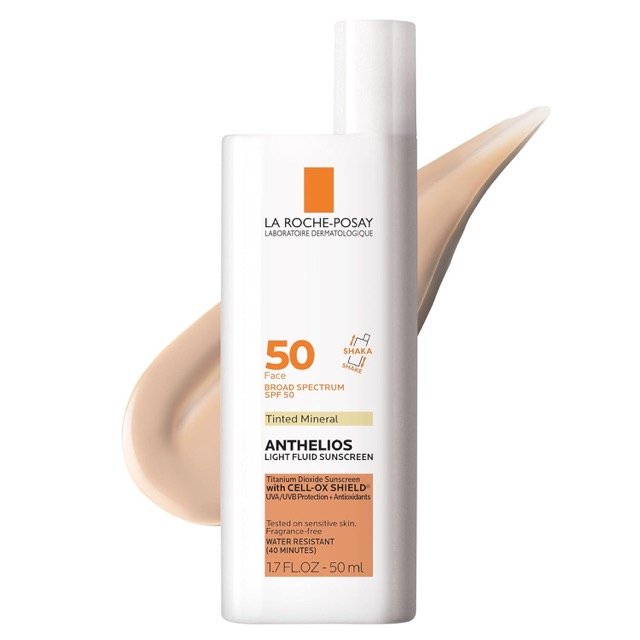By attaching to one or more of the penicillin-binding proteins, ticarcillin clavulanate potassium prevents the formation of bacterial cell walls (PBPs).
Ttreats the following infections:
-
Bone and joint infections occurs due to:
-
beta-lactamase-producing isolates of Staphylococcus aureus.
-
-
Endometritis caused by:
-
Beta-lactamase-producing isolates of Prevotella melaninogenicus,
-
Enterobacter species (including E. cloacae)
-
S. aureus
-
Klebsiella pneumoniae
-
Escherichia coli or
-
Staphylococcus epidermidis.
-
-
Lower respiratory tract infections caused by:
-
Beta-lactamase-producing isolates of S. aureus
-
Haemophilus influenzae
-
Klebsiella species.
-
-
Peritonitis occurs due to:
-
Beta-lactamase-producing isolates of E. coli,
-
K. pneumonia
-
Bacteroides fragilis group.
-
-
Septicemia including bacteremia caused by:
-
Beta-lactamase-producing isolates of Klebsiella species
-
E. coli
-
S. aureus
-
Pseudomonas aeruginosa (or other Pseudomonas species).
-
-
Skin and skin structure infections occurs due to:
-
beta-lactamase-producing isolates of S. aureus
-
Klebsiella species
-
E. coli.
-
-
Complicated and uncomplicated Urinary tract infections occurs due to:
-
beta-lactamase-producing isolates of E. coli
-
Klebsiella species
-
P. aeruginosa (and other Pseudomonas species)
-
S. aureus
-
Citrobacter species
-
Enterobacter cloacae
-
Serratia marcescens
-
-
Off Label Usage of Ticarcillin clavulanate potassium in Adults:
-
Intra-abdominal infections
-
Cystic fibrosis exacerbations
-
Ticarcillin clavulanate dose in Adults
- Ticarcillin clavulanate is a combination product
- Each 3.1 g dosage form contains 3 g ticarcillin disodium and 0.1 g clavulanic acid.
Dosage in the treatment of Gynecologic infections like endometritis:
-
Moderate infections:
- The maximum daily dose is 12 g of ticarcillin given intravenously in divided doses every 6 hours.
-
Severe infections:
- Every 4 hours, 300 mg/kg of ticarcillin is administered intravenously in divided doses.
- The daily maximum dose is 18 g.
Systemic infections:
-
<60 kg:
- Divided doses of 200-300 mg/kg/day of ticarcillin are administered intravenously every 4–6 hours.
- The daily maximum dose is 18 g.
-
≥60 kg:
- 1 gm intravenously is given every 4-6 hours
Dosage in the treatment of Urinary tract infections:
-
<60 kg:
- Divided doses of 200-300 mg/kg/day of ticarcillin are administered intravenously every 4–6 hours.
- The daily maximum dose is 18 g.
-
≥60 kg:
- 1 gm intravenously is given every 4-6 hours
Off label Dosage for treating complicated mild to moderate community-acquired Intra-abdominal infection:
- 3.1 g is given every 6 hours for 4-7 days
Ticarcillin clavulanate dose in Children
General dosing for susceptible infection:
- Infants, Children, and Adolescents:
-
Mild to moderate infections:
- Divided dosages of 200 mg/kg/day of ticarcillin are administered intravenously every six hours.
- The daily dose cap is 12 g of ticarcillin.
-
Severe infections:
- Manufacturer's labeling:
- Split dosages of 300 mg/kg/day of ticarcillin are administered intravenously every four hours.
-
AAP recommendations:
- Divided doses of 200-300 mg/kg/day of ticarcillin are administered intravenously every 4–6 hours.
- The daily dose cap is 18 g of ticarcillin.
-
Dose in the treatment of Cystic fibrosis:
- Infants, Children, and Adolescents:
- Higher doses have also been utilised, such as: 400 mg ticarcillin/kg/day intravenously administered in divided doses every 6 hours. split dosages of 400–750 mg of ticarcillin per kilogramme every six hours.
Ticarcillin clavulanate Pregnancy Risk Factor B
- Animal reproduction studies did not show any adverse events.
- Placenta can be crossed by Ticarcillin or Clavulanate
- Penicillin use by mothers has not been associated with an increase in the risk of side effects for fetus.
- For the treatment of postpartum gynecologic infections, including endometritis, brought on by susceptible microorganisms, ticarcillin/clavulanate is recommended.
Ticarcillin clavulanate potassium use during breastfeeding:
- Breast milk contains small amounts of ticarcillin, but it is not absorbed if taken orally.
- The manufacturer suggests that nursing mothers exercise caution when administering ticarcillinclavulanate.
Ticarcillin clavulanate dose in Renal disease:
- Loading dose:
- 3.1 gms intravenously as a single dose, followed by maintenance dose according to creatinine clearance:
-
CrCl 30-60 mL/minute:
- Give 2 g of ticarcillin component every 4 hours
-
CrCl 10-30 mL/minute:
- Give 2 g of ticarcillin component every 8 hours
-
CrCl <10 mL/minute:
- Give 2 g of ticarcillin component every 12 hours
-
CrCl <10 mL/minute with concomitant hepatic dysfunction:
- Give 2 g of ticarcillin component every 24 hours
-
- 3.1 gms intravenously as a single dose, followed by maintenance dose according to creatinine clearance:
-
Intermittent hemodialysis (IHD) (administer after hemodialysis on dialysis days):
- Dialyzable (20% to 50%):
- 2 gms of ticarcillin component is given every 12 hours
- It is supplemented with 3.1 g (ticarcillin/clavulanate) after each dialysis session.
- Alternatively, give 2 g every 8 hours without a supplemental dose for deep-seated infections.
- Dialyzable (20% to 50%):
- Dosing is dependent on the assumption of 3 times/week, complete IHD sessions.
-
Peritoneal dialysis (PD):
- 1 g every 12 hours is given
-
Continuous renal replacement therapy (CRRT) :
- Drug clearance is highly dependent on the method of renal replacement, type of filter, and flow rate.
- Appropriate dosing needs close monitoring of pharmacologic response, signs of adverse reactions due to drug accumulation, and drug concentrations in relation to target trough (if appropriate).
- The following are only general recommendations (based on dialysate flow/ultrafiltration rates of 1-2 L/hour and minimal residual renal function) and should not supersede clinical judgment:
- CVVH:
- a loading dose of 3.1g is given followed by 2 g every 6-8 hours
- CVVHD:
- a loading dose of 3.1 g is given followed by 3.1 g every 6-8 hours
- CVVHDF:
- a loading dose of 3.1 g is given followed by 3.1 g every 6 hours
- CVVH:
- Do not give in intervals exceeding every 8 hours.
- Clavulanate component is hepatically eliminated; which extends the dosing interval beyond 8 hours may result in loss of beta-lactamase inhibition.
Ticarcillin clavulanate dose in liver disease:
- With concomitant renal dysfunction (Clcr<10 mL/minute): 2 g of ticarcillin component is given every 24 hours.
Side effects of Ticarcillin clavulanate
-
Cardiovascular:
- Local Thrombophlebitis (With Iv Injection)
-
Central Nervous System:
- Confusion
- Drowsiness
- Headache
- Seizure
-
Dermatologic:
- Skin Rash
-
Endocrine & Metabolic:
- Electrolyte Disturbance
- Hypernatremia
- Hypokalemia
-
Gastrointestinal:
- Clostridioides (Formerly Clostridium) Difficile-Diarrhea
- Diarrhea
- Nausea
-
Genitourinary:
- Proteinuria (False Positive)
-
Hematologic & Oncologic:
- Bleeding Complication
- Eosinophilia
- Hemolytic Anemia
- Positive Direct Coombs' Test (False Positive)
-
Hepatic:
- Hepatotoxicity
- Increased Serum Alt
- Increased Serum Ast
- Jaundice
-
Immunologic:
- Jarisch Herxheimer Reaction
-
Infection:
- Fungal or bacterial Superinfection
-
Renal:
- Acute Interstitial Nephritis
-
Miscellaneous:
- Anaphylaxis
Contraindication to Ticarcillin clavulanate potassium Include:
- Hypersensitivity is a history of severe reactions (eg anaphylaxis or Stevens-Johnson syndrome) to ticarcillin or clavulanate.
Warnings and precautions
- Hypersensitivity reactions
- Patients on penicillin therapy have experienced severe and sometimes fatal hypersensitivity reactions (anaphylactic)
- This is especially true if they have a history beta-lactam hypersensitivity, sensitivity to multiple allergens or IgE-mediated reactions such as anaphylaxis, urticaria, or angioedema.
- Asthmatic patients should be cautious.
- Bleeding disorders:
- Bleeding disorders are more common in patients with significant renal impairment.
- If bleeding or thrombocytopenia occurs, stop immediately.
- Hypokalemia
- Hypokalemia has been observed
- Monitor serum potassium for patients receiving prolonged therapy or who have a fluid or electrolyte imbalance.
- Superinfection
- Long-term use may lead to fungal or bacterial superinfection, including pseudomembranous colitis and C.difficile-associated diarrhoea (CDAD).
- CDAD was seen after more than two months of postantibiotic treatment.
- Heart failure (HF):
- It could be challenging to use this medicine in HF patients due to high salt loading.
- Renal impairment
- Adjusting the dosage is advised for patients with compromised renal function.
- Seizure disorders:
- Patients with seizure disorders should be cautious. High levels of the drug, especially in the presence renal impairment, can increase the risk of seizures.
Monitor:
- During the initial dose, watch for anaphylactic symptoms and signs;
- serum electrolytes
- bleeding time
- periodic tests of renal, hepatic, and hematologic function
How to administer Ticarcillin clavulanate potassium?
Infuse intravenously over 30 minutes.
- If combination penicillin/aminoglycoside therapy is needed in a patient with renal dysfunction, separation of doses (if feasible), and routine monitoring of aminoglycoside levels, CBC, and clinical response should be done.
Mechanism of action of Ticarcillin clavulanate potassium:
- A beta-lactam antibiotic, it prevents the formation of bacterial cell walls by attaching to one or more penicillin-binding proteins (PBPs)
- It blocks the final step of peptidoglycan synthesis in bacterial cell walls.
- Bacteria eventually lyse because of ongoing activity by cell wall autolytic enzymes (autolysins, murein hydrolases), while cell wall assembly becomes blocked.
Distribution:
- Ticarcillin is mainly distributed into the tissue, interstitial fluid, pleural fluid, and bile;
- low concentrations of ticarcillin distribute into the CSF but increase when meninges are inflamed.
Protein binding: Ticarcillin: almost 45%; Clavulanic acid: almost 25%
Metabolism: Clavulanic acid is metabolized via hepatic route
Half-life elimination:
- Neonates: Ticarcillin: 4.4 hours & Clavulanic acid: 1.9 hours
- Children (1 month to 9.3 years): Ticarcillin: 66 minutes & Clavulanic acid: 54 minutes
Adults:
- Ticarcillin: 66 - 72 minutes; 13 hours (in patients having renal failure)
- Clavulanic acid: 66 - 90 minutes; clavulanic acid does not affect the clearance of ticarcillin
Time to peak, plasma:
- Immediately after completion of a 30-minute infusion
Excretion:
- Children:
- Ticarcillin: Via Urine (71% 50% as unchanged drug over 4 hours);
- Clavulanic acid: Via Urine (50% as unchanged drug over 4 hours)
- Adults:
- Ticarcillin: Via Urine (60% to 70% as unchanged drug);
- Clavulanic acid: Via Urine (35% to 45% as unchanged drug)
International Brands of Ticarcillin clavulanate potassium:
- Betabactyl
- Claventin
- Ticarcin
- Ticarnic
- Timentin
Ticarcillin clavulanate potassium brands in Pakistan:
Ticaclav (Inf: 3.2 gms: 4 vials - Rs.2040) -
Stallion







